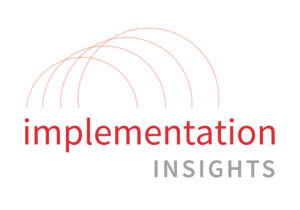A Scandinavian Corporate-Investor Dialogue helped advance the consensus around corporate reporting in the region
Scandinavian investors are at the forefront of ESG integration, yet just 32% of the region’s top companies have answered investors’ calls to adopt SASB Standards, compared to 52% in the rest of Europe*. Recently Norges Bank Investment Management (NBIM), Nordea Asset Management (NAM) and the Value Reporting Foundation (VRF) invited a select group of companies from Sweden, Norway and Denmark to participate in a roundtable discussion about the rapid evolution toward a simplified corporate reporting system and how companies and investors can better engage around ESG issues.
Eivind Fliflet, Head of Environmental Initiatives for NBIM, who leads a team of analysts engaging with companies on sustainability issues on behalf of Norway’s sovereign wealth fund, emphasized that corporate reporting underpins NBIM’s stewardship and investment activities. “Better reporting can increase market efficiency, capital allocation and growth over time,” he said. “With financial materiality as a starting point, we ask companies to report in accordance with the SASB Standards and the recommendations of the Task Force on Climate-related Financial Disclosures (TCFD). We also think that companies should adhere to international standards of responsible business conduct and account for their impacts on society and the environment, and that can be done well with the GRI standards as a starting point.”
Similar to the pattern of the TCFD, NBIM asks companies to disclose how they’re exposed to sustainability risks, how those risks are managed including board oversight and targets, and reliable KPIs. “Exposure, management and performance,” Fliflet summed up.
NAM launched its first ESG fund in 2011 and was a founding member of the SASB Standards Investor Advisory Group in 2016. “We already believed that a sector-specific focus on financial materiality was crucial,” said Katarina Hammar, Head of Active Ownership for NAM, adding, “We encourage companies to put sustainability data in their regular reporting so they have much the same assurance as the financial numbers.” In reference to the fast-changing disclosure landscape, Hammar said NAM encourages regulators not to create new standards. “There are already good standards out there,” she said.
Stages of the ESG Journey
Sustainability, investor relations and finance executives joining NBIM and NAM at the roundtable represented a range of industries and levels of maturity in ESG reporting. “It’s been a journey,” recounted one, describing starting with GRI then adding TCFD and Science Based Targets initiative (SBTi) and now committing to SASB reporting in the next cycle. The EU Taxonomy, she added, will require a lot of work.
A key pain point was the proliferation of demands for information. “We feel like we’re getting overwhelmed by requests,” said a sustainability officer from a manufacturer. “It’s rare a week goes by without filling out a comprehensive ESG questionnaire.”
Another sustainability chief talked of the challenge of catering to different audiences. “We have three main groups of stakeholders for ESG information, with surprisingly little overlap: investors, customers and regulators,” he described. “Now, with the EU Taxonomy, our banks and insurers are coming for us, too. It adds up to a lot.”
The big change in investor discussions and reporting demands has been “the rise to prominence of financially material sustainability factors,” said a shipping executive, and that has led to an important byproduct: “Contrary to being a burden, TCFD and SASB Standards are strengthening our business quite apart from the reporting output. They’re changing our culture.”
For one of the companies, a GRI-based materiality assessment has served it well for a decade, showing hotspots and grounding action plans to reduce impacts. Now the company’s TCFD reporting is starting small and building up in layers while the VRF’s work building inter-operability between GRI and the SASB Standards is welcome: “That can really help provide value-added, decision-meaningful information for our investors.”
Emerging Vision
One corporate participant in the roundtable is a member of the SASB Standards Advisory Group, contributing to standard-setting and updating, and spoke enthusiastically of wanting to spotlight one good framework and discourage others from popping up – “especially one that’s open to refining its standards. It’s hard to compare our industry with other sectors so SASB’s industry-specific approach is the way we’d like to see things going.”
Another participant spoke favourably of the Integrated Reporting Framework, the Foundation’s other key resource. “It’s extremely helpful to have guidelines on how to report, with common rules on structuring a sustainability report,” she said.
Despite their wide range of perspectives and stages on their ESG journeys, the Scandinavian executives in this session agreed on two main points. First, for all the development around standards and frameworks, the dialogue between investor and company is still critical. And in an echo of the comments from NAM and NBIM, they welcomed consistent, comparable and reliable data, as well as the “emerging vision” carrying the corporate reporting system toward simplicity and alignment. “We’re in a time of transparency, and it’s never going to recede,” surmised one of the executives.
*S&P Euro 350 constituent companies reporting with SASB Standards as of end of August 2021

